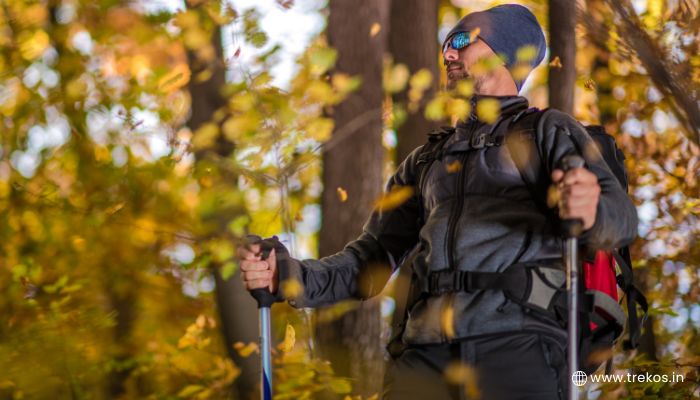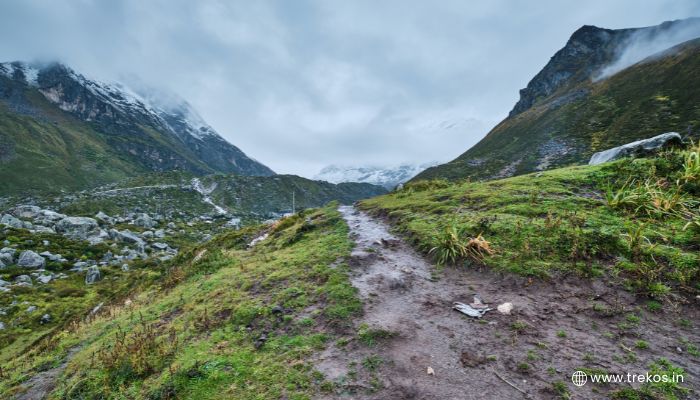The Bali Pass Trek is one of the greatest electrifying and worthwhile treks in the Indian Himalayas, attractive to explorers over condensed woodlands, vivacious alpine grazing land, and rocky high-altitude sceneries. A vital part of the preparation for your exploration depends on the understanding best time to do for Bali Pass Trek. Weather environments, path safety, and scenic gorgeousness all pivot on timing, so preference for the idyllic season is important to exploit your experience.
Wherefore Timing Matters on the Bali Pass Trek
When it comes to mountain journeys, weather patterns and seasonal variations can change your expedition completely. The best time to do for Bali Pass Trek is about added than just vibrant skies; it’s about discovering the picture-perfect stability of safety, picturesque exquisiteness, and enjoyable weather conditions. While the attraction of travelling this splendid trek might be appealing year-round, certain months stand out for offering the most pleasurable and manageable trek.

Seasons: Selecting the best time to do for Bali Pass Trek
Every season fetches something exclusive to the Himalayas. However, not all seasons are correspondingly suitable for high-altitude trekking. Let’s discover the various seasons to help regulate the best time to do for Bali Pass Trek founded on features like temperature, trek conditions, and photographic exquisiteness.
Spring: An Arising of Nature (March to April)
Spring is a time of rejuvenation in the Himalayas, and even though it’s a less communal season for the Bali Pass Trek, it has its exclusive demand. Initial spring can bring impulsive weather conditions, with melting snow on higher trek paths. However, for those watching for solitude, this can be one of the best time to do for Bali Pass Trek, specifically if you’re well-prepared. Temperatures are mild in the daytime but be organized for frigid nights. Blossoming flowers add bursts of colour to the scenery, making it a picturesque excellent for nature fanatics.

Summer: The Ultimate Season for the Bali Pass Trek (May to June)
For many, summer is well thought-out as the best time to do for Bali Pass Trek, particularly in May and June. During these months, the snow has melted from the trails, making safer paths and more reachable crossings. The daytime temperatures are warmer, creation it comfortable for trekking, while the nights are crisp but not intolerably cold. Summer offers some of the clearest skies, with spectacular sights of the surrounding peaks like Bandar Poonch and Swargarohini.
The Magic of the Monsoon (July to August)
While the pleasant greenery throughout the rainy season might appear alluring, it’s characteristically not the best time to do for Bali Pass Trek. The trail becomes slippery and challenging to navigate, with a higher chance of landslides, especially in narrow passes. If you’re an experienced trekker looking for a unique, challenging experience and can grip intense rain, this might be a choice, but normally, monsoon is best evaded.

Autumn: A Golden Season for Trekkers (September to October)
Autumn is extensively well thought-out and the best time to do for Bali Pass Trek, particularly for individuals who want both spectacular sights and idyllic weather. September and October offer positivity, calm temperatures and some of the clearest skies of the year. The paths are dry, the air is fresh, and there’s an enchanted wonderful hue to the scenery. This period sees less crowds than summer, allowing for a more peaceful experience. Autumn is also a prime time for apprehending fabulous photographs as the landscape changes with warm autumn colours.

Winter: A Snow-Covered Wonderland (November to February)
Winter trekking in the Himalayas is only for the exploratory and well-prepared. Heavy snowfall covers the path, creating a hard environment that’s best left to experienced trekkers. Winter is not normally seen as the best time to do for Bali Pass Trek due to harsh temperatures, possible snow slides, and deep snow on hills. However, for those looking for a unique experience, winter offers a natural, dreamlike landscape with a sense of peace and lonely time.
Weather Breakdown: Temperatures and Conditions by Month
Understanding the temperature ups-downs and climate conditions each month will help you decide on the best time to do for Bali Pass Trek:
May to June: Day temperatures range between 10-15°C, and nights can drop to around 0-5°C. This is a perfect time due to the balanced warmth during the day and tolerable chill at night.
September to October: In the same way as summer, autumn months offer mild daytime temperatures but cooler nights, perfect for trekkers who enjoy weather without extreme cold.
November to February: It is really cold, with daytime temperatures hardly more than 5°C and nights dropping well below freezing. Snow and ice make this period difficult for trekking.
March to April: Spring temperatures start to increase, making a comfortable environment. However, melting snow may create occasional slippery paths.

How to Make for the best time to do for Bali Pass Trek
When you’ve selected the best time to do for Bali Pass Trek, getting ready becomes key to ensuring a successful adventure. Physical fitness, proper gear, and an understanding of potential weather moves will make your journey smoother. High-altitude trekking can present amazing, so training, especially with cardio and stamina exercises, is suggested. Prepare yourself with layered clothing, a strong pair of boots, trekking poles, and weather-resistant gear.
The Unique Experience of Each Season
Each season brings out a different side of the Bali Pass Trek, making it an adaptable destination for adventurers. While most would agree that summer and autumn are the best times to do for the Bali Pass Trek, some find charm in the quieter spring season. Even in winter, the landscape offers an interesting, still challenging, beauty. Selecting a season that lines up with your preferences—whether it’s less crowds, lively greenery, or a snowy adventure—can change your trekking experience.

Best time to do for Bali Pass Trek: A Choice for Every Trekker
No matter the time you select, the Bali Pass Trek promises outstanding experiences. However, for those looking for optimal conditions, the best time to do for Bali Pass Trek falls between May-June and September-October. These months offer the most favourable balance of comfortable weather, clear skies, and safe path conditions. For thrill-seekers, the winter trek gives a unique experience but demands extensive preparation and experience.
Necessities to Pack for the best time to do for Bali Pass Trek
Packing well is important to make the most of the best time to do for Bali Pass Trek. Depending on the season, adjust your packing list to include thermal layers, rain gear, sunscreen, and high-energy snacks. Irrespective of the season, adequate water and electrolytes are necessities to prevent dehydration. Packing light yet smartly will allow you to enjoy the trek fully without needless draining.

Booking Your Trek: Planning for the Best Time
As soon as you’ve determined the best time to do for Bali Pass Trek, booking in advance is a wise choice, especially for peak season. Summer and autumn months attract the maximum number of trekkers, so reserve your spot early ensures availability and better rates. Look for reliable trekking companies or experienced guides who can provide safe and knowledgeable directions on the trail.
Safety Precautions During Peak Season
Even if you’ve selected the best time to do for Bali Pass Trek, safety remains paramount. Always check weather conditions updates before starting, as mountain circumstances can change suddenly. Prepare yourself with a first-aid kit, carry altitude sickness medicine, and consider bringing portable gear. Follow guidelines from your guide and avoid risky activity, especially on challenging parts of the trekking.

Photography Tips for Capturing the Best of Bali Pass
If photography is part of your trekking journey, the best time to do for Bali Pass Trek offers endless motivation. The warm hues of autumn, the lush greenery of summer, and even the snowy landscapes in winter offer unique photo occasions. Carry a lightweight camera or smartphone with extra batteries, as the high-altitude cold can drain power rapidly. Capture sunrise and sunset sceneries for some of the most superb shots of the Bali Pass trek.
Respecting Local Customs Year-Round
As you travel best time to do for Bali Pass Trek, remember to respect local culture and traditions. The trek passes through traditional villages, where locals practice age-old cultures. Be mindful and respectful when interacting, and follow any guidelines for behaviour around sacred places or temples. Understanding and appreciating the local culture can make your experience even richer.

Conclusion: Timing Your Adventure Perfectly
In conclusion, timing plays an important role in your Bali Pass Trek experience. While each season offers its charm, for most trekkers, the best time to do for Bali Pass Trek remains the months of May to June and September to October. Selecting the right time ensures you get the best blend of scenic beauty, safety, and memorable moments. Whether you’re a first-time trekker or an experienced mountaineer, timing your trek wisely will help you create memories that last a lifetime.
FAQs
- What is the best time to do for Bali Pass Trek?
Ans: The perfect time for the Bali Pass Trek is from May to June and September to October when weather circumstances are favourable and the paths are safe.
- Is it possible to trek the Bali Pass during winter?
Ans: Yes, but winter is tough with extreme cold and heavy snow. Winter trekking is appropriate for experienced trekkers with high-altitude winter gear.
- How long does it take to complete the Bali Pass Trek?
Ans: The trek generally takes about 7 to 8 days, depending on your journey and step.
- Can beginners undertake the Bali Pass Trek?
Ans: The Bali Pass Trek is tough, so it’s advised for trekkers with some experience and good physical fitness.
- Are permits mandatory for the Bali Pass Trek?
Ans: Yes, permits are mandatory. Your trekking agency or guide can help arrange them.
- What should I pack for the Bali Pass Trek?
Ans: Important items include warm clothing, trekking poles, water bottles, a first-aid kit, and snacks. Seasonal gear is also essential.
- How do I deal with altitude sickness on the trek?
Ans: To manage altitude sickness, take time to familiarize yourself, stay hydrated, and consider carrying medicine if recommended by a doctor.
- What wildlife might I encounter on the trek?
Ans: You may see animals like Himalayan monals, blue sheep, and maybe snow leopards if you’re blessed. Respect wildlife and witness from a distance.













